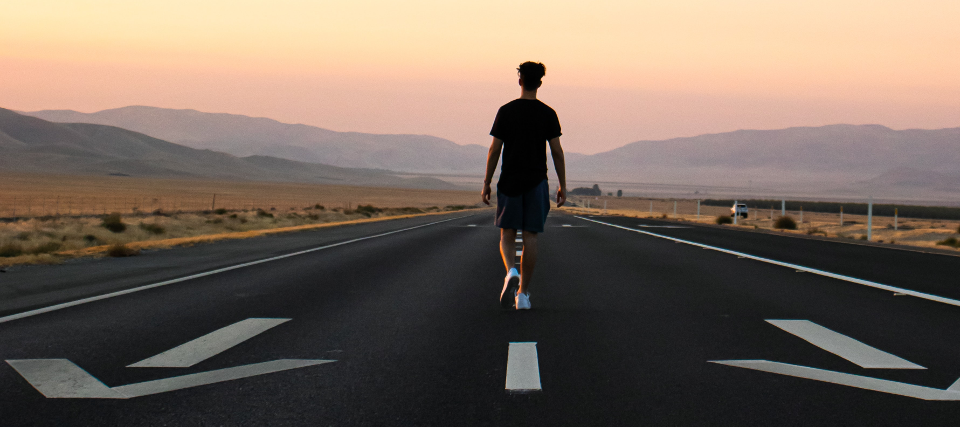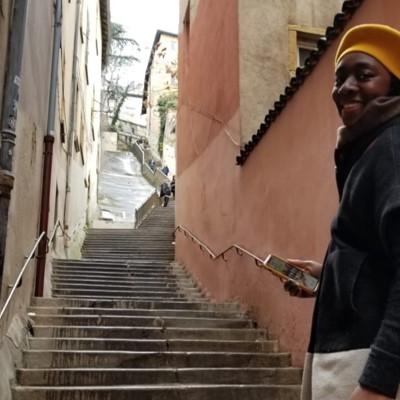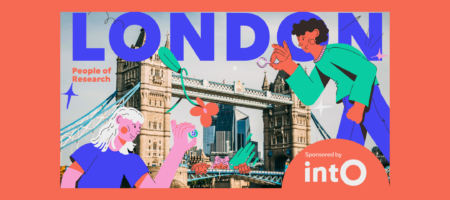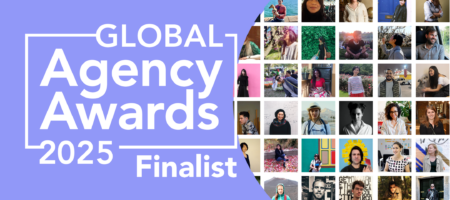
As we all know, the recent disruption of various global systems is fuelling massive uncertainty, so businesses and brands all over the world are hoping for a better next year. However, over many conversations with brand and agency clients, a tricky paradox has become apparent; whilst strategic plans are the go-to weapon against uncertainty, the relevance of this year’s plans and the futures being planned for, are also uncertain. To exacerbate things, economic slowdown and an impending global recession are already causing steep budget cuts, leaving little room for experimental manoeuvres. Business plans now need to deliver more with less and focus on growth activities that are certain to deliver. So what to do? I find that the general problem with plans is they tend to rely on fixed variables; listed tasks demand to be followed linearly, so if you miss a step the disruption has a domino effect. For this reason, I dislike using ‘plan’ as a noun and prefer to work with the analogy of travel.
‘There are many roads to prosperity, but one must be taken. Inaction leads nowhere.’
Robert Zoellick
The roadmap: an antidote to uncertainty
Roadmaps are commitments to explore, assess and improve, rather than mandates to hit predetermined targets. For this reason, they are a vital tool for scoping future work streams, especially in uncertain times. The best roadmaps have two simple building blocks: a start point and a future vision that has a timeline (like five years out or up to 2030). Conducting business without a roadmap is like beginning a hike towards a distant horizon, without knowing how long the journey will take or what you’ll find when you get there. To be clear, the critical piece of information in this scenario is neither the destination nor the distance, it’s actually your current coordinates; in order to figure out how to get where you’re going, you first need to know exactly where you are.
Your current position should be determined by your customers
For products and services, your start point should be determined solely by your customers, not your shareholders or investors – and not your supply chain, nor the competitive landscape and not even your mission. Your starting position has to be anchored in the real lives of the real people who will carry you into the future with them. So many business leaders define their customer context and use cases early on, then freeze their lens, tracking the same set of behaviours and assuming they will remain important.
It’s often said but bears repeating: the needs, motivations and behaviours of humans keep shifting – and when contextual factors like public health concerns precipitate major shifts, then priorities and expectations for the things we consume change dramatically. Regularly refreshing your understanding of where your business fits within the lives of real people was important before the pandemic – but now it’s imperative.
Life-led research
At intO, we’ve spent this year helping brands and businesses – across numerous categories and countries – to figure out their current position in their customers’ lives and forecast future scenarios that are relevant to that current position. We do this with a combination of qualitative remote research methodologies that form the bedrock of our Global Futures Roadmap offer. As our Strategy Director, my focus across all these projects has been to help clients assess the gap between where they think their brand is and where we should look to establish the truth. I mentioned in my previous article (It’s 10pm at the end of the world*. Do you know where your brand is?) that our framework for this process is what we call ‘life layers,’ which provide a handy bridge between the world we see and the world brands want to build. For our purposes, there are six layers: Identity, Body, Home, Community, Work and Society – each one is a potential orientation point for brands and businesses in the world today.
In times of rapid and complex changes such as those we’ve seen this year, thinking about life layers helps us to pull seemingly fragmented insights together into a coherent picture – and then figure out how a client’s position has shifted. Three quick examples come to mind:
- The sales explosion of disinfectant wipes in Q2 of this year came as no surprise. However, the worries about a surge in blocked toilets and clogged sewage systems ended up being unfounded. Why? Because the product’s position had shifted from bathroom cabinets to handbags, backpacks and glovebox compartments. Wipes became the go-to for sanitising contact surfaces outside of the home.
- The need for escapism exploded early on in the pandemic’s lockdown phase. The impact on the entertainment industry was severe: travel, leisure, hospitality and nightlife were all paused indefinitely. As a result, the competitive landscape for escapist entertainment shifted from planetary to domestic pursuits, which seemed like good news for alcohol brands. However, in real life, the logic doesn’t always neatly translate. People don’t replace socialising and nights out simply by drinking alcohol at home. Instead, a whole new set of competitors came into play: home spa products, gym equipment, culinary gadgets and sex toys, for starters.
- The unexpected challenge of home-schooling created so many pain points for parents the world over. In addition to the stress of 24-hour contact with socially traumatised children and teenagers, parents also experienced a tooling crisis; the system of design, delivery and distribution for educational platforms and supplies has always targeted professional teachers as its primary user group. Now that many countries are considering another lockdown period going into 2021, this industry will need to move quickly.
How far and fast can you go?
Now back to our hiking analogy. Once you’ve figured out your position, you can assess how far and how fast you’re capable of traveling and what that journey might look like. Our research director, Chloe Amos-Edkins, has written a complementary article to this one that explains our approach to forecasting (Foresight: where the future[S] meets your business plan). Read this and you’ll learn how we combine remote research methodologies to explore relevant future shifts for any business or category, and how we identify the opportunities that these future shifts might bring into play.
Hiking by instinct alone might feel exhilarating at first, but it invariably leads to mistakes, fatigue and going around in circles. Even if the destination remains unknown, refreshed relevance and proven pathways to progress are attainable with a life-led roadmap in hand.
Do you have questions about life layers or remote research for design? Would you like to learn more about intO’s Global Futures Roadmap offer for your brand, business or department? Then feel free to book a slot in my diary HERE.
 Onika Simon is intO’s Strategy Director and is dedicated to growing our philosophy into conversations, and nurturing those interactions into work that delivers impactful decisions and outcomes for intO’s agency and brand clients. Learn more about Onika here, and find her on LinkedIn here.
Onika Simon is intO’s Strategy Director and is dedicated to growing our philosophy into conversations, and nurturing those interactions into work that delivers impactful decisions and outcomes for intO’s agency and brand clients. Learn more about Onika here, and find her on LinkedIn here.
Lead photo by Jordan Niranjan on Unsplash
Posted on October 8th, 2020
Brand Strategy Business Publications Research


 Onika Simon is intO’s Strategy Director and is dedicated to growing our philosophy into conversations, and nurturing those interactions into work that delivers impactful decisions and outcomes for intO’s agency and brand clients. Learn more about Onika
Onika Simon is intO’s Strategy Director and is dedicated to growing our philosophy into conversations, and nurturing those interactions into work that delivers impactful decisions and outcomes for intO’s agency and brand clients. Learn more about Onika 
